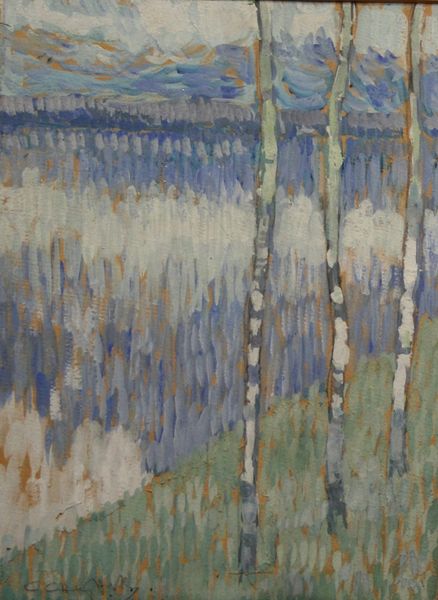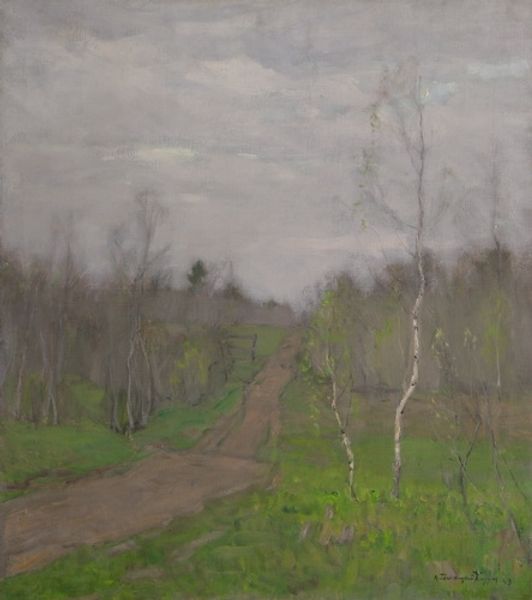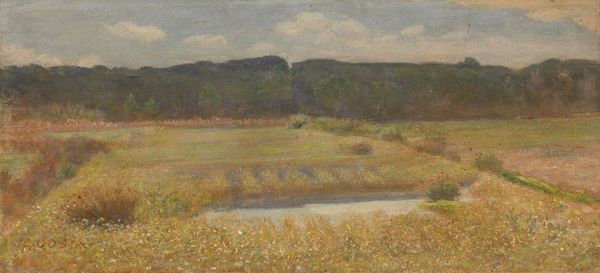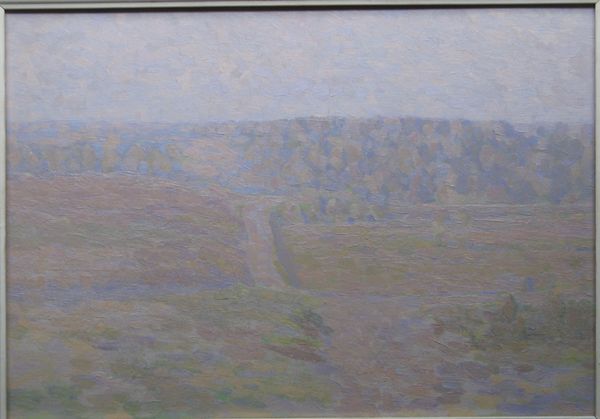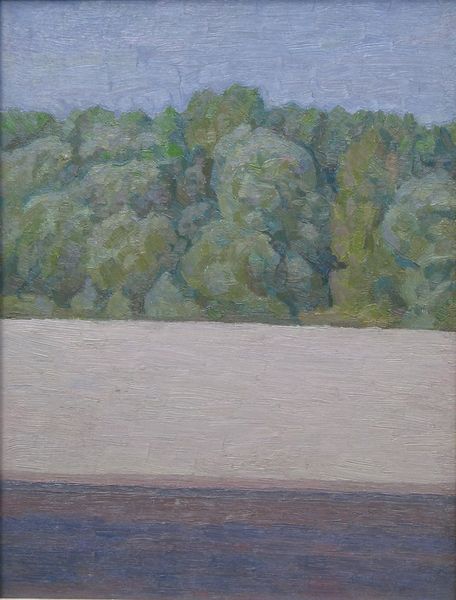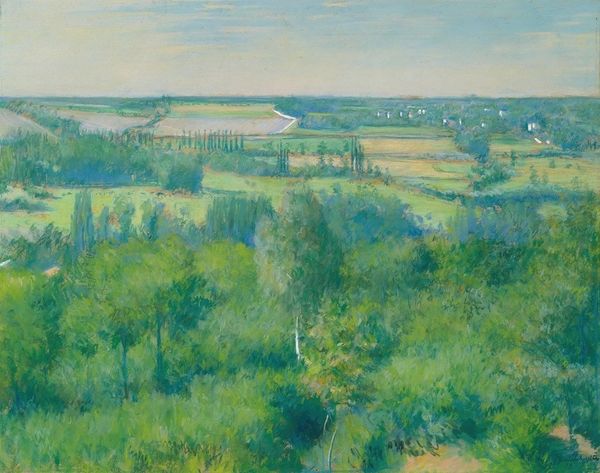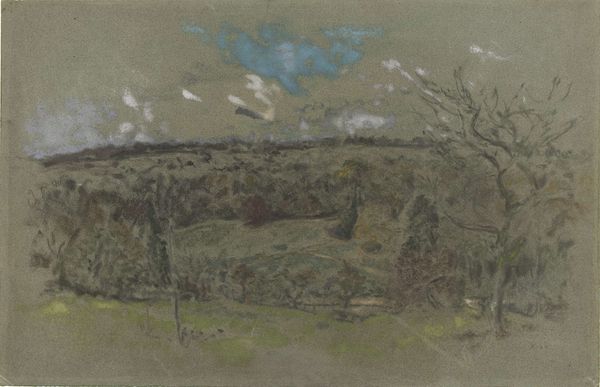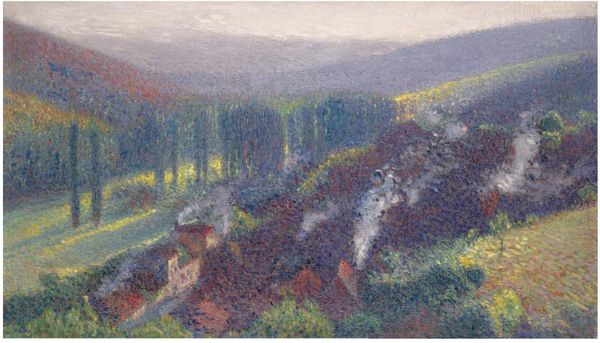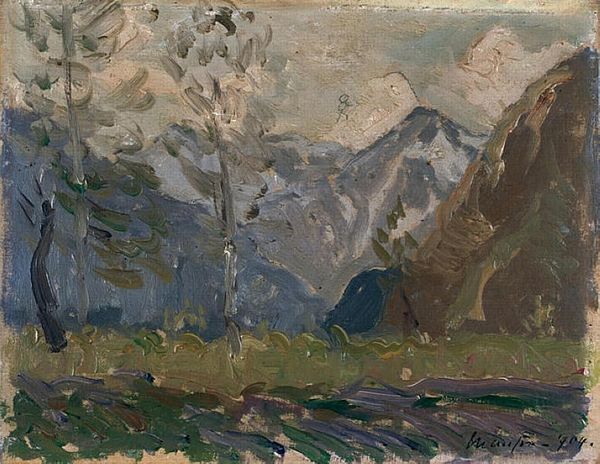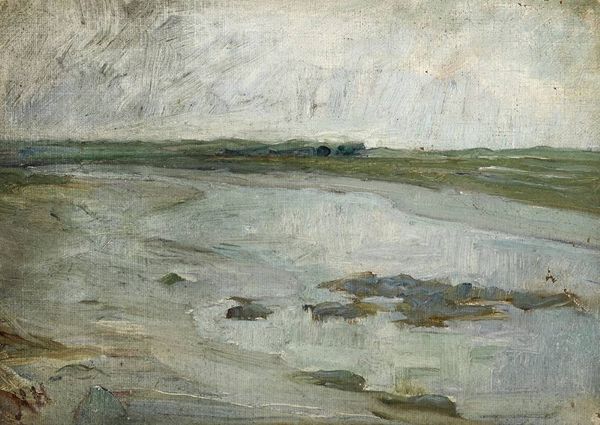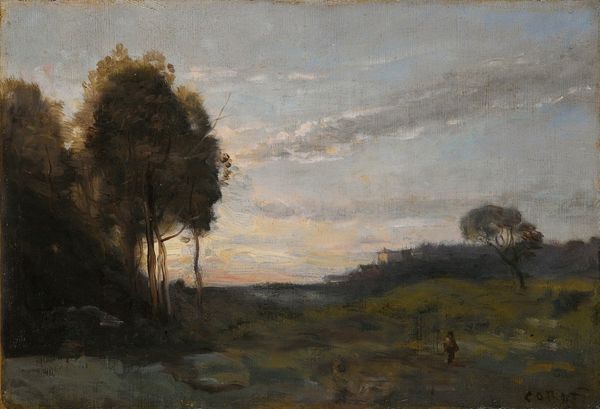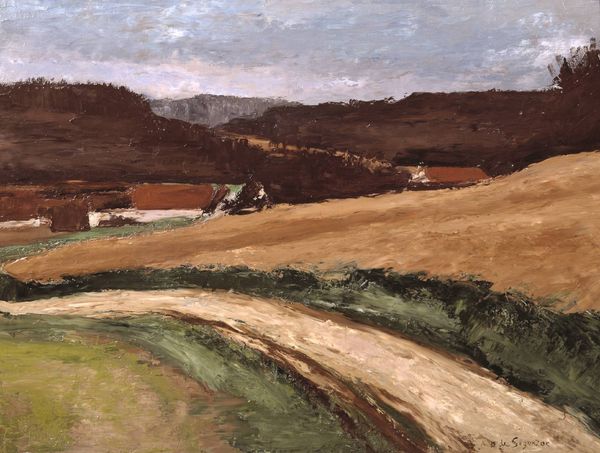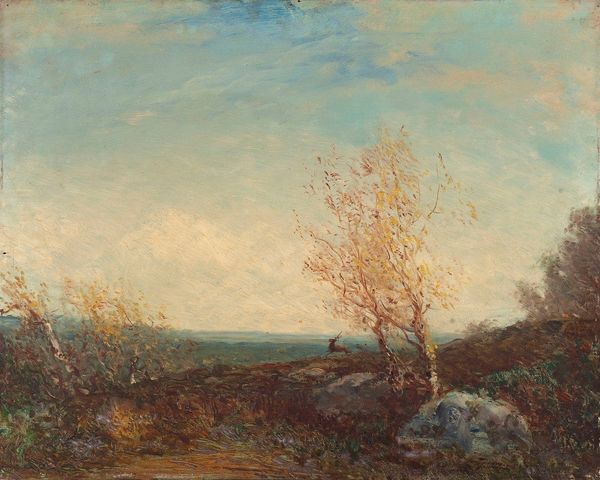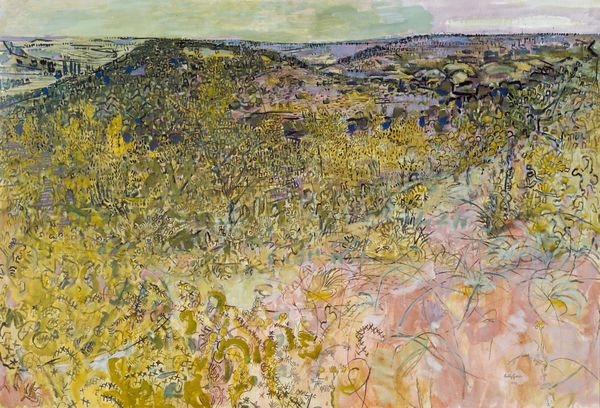
Copyright: Public Domain: Artvee
Curator: Welcome. We are standing before "Maasik," an oil painting crafted between 1908 and 1910 by the Estonian artist Konrad Mägi. Mägi was pivotal in introducing modernist influences to Estonian art, largely working within the realms of post-impressionism and expressionism. Editor: It evokes a quiet sort of melancholy, doesn't it? A landscape of muted tones layered in bands – ochre fields giving way to emerald hills and hazy blue forests. The sky itself feels like it's holding its breath. Curator: Absolutely. And in Mägi's Estonian context, the work’s atmospheric perspective, heavy with muted tones and earthy colours, resonates with the nation’s cultural mood in the early 20th century. Estonian national identity was gaining force; artistic representation played a role in creating the spirit. Editor: And there's a striking juxtaposition between the cultivated, ordered field in the foreground and the wild, almost impenetrable forest in the distance. That opposition highlights how society both interacts with and contrasts against the landscape. Were those ordered fields even accessible to most? Curator: That tension, I think, encapsulates a larger anxiety about modernity and its encroachment on traditional ways of life, on agricultural landscapes, at the time. While there's little social realism evident in most landscapes, the act of representation implies questions of land ownership and power dynamics. Editor: Which leads us to question, doesn't it, who benefited from these meticulously rendered fields? And who might have felt displaced by this push for 'progress' or agrarian order that inevitably disrupts ecosystems. The artist lived from 1878-1925 during considerable industrial transformation. I do wonder, in this context, how much of what appears to be tranquility in the painting veils much deeper conflict. Curator: Those are interesting interpretations for understanding it today. And the expressionist influence cannot be discounted when considering Konrad Magi’s other symbolic pieces. What could "Maasik" suggest beyond the beautiful land itself? Editor: This image really speaks to the fact that art is so much more than simply aesthetics, isn’t it? It encourages questioning the circumstances that made the image both possible and meaningful. Curator: Yes, truly seeing requires more than looking. It’s about comprehending what histories and contexts imbue each brushstroke, shape, and shade.
Comments
No comments
Be the first to comment and join the conversation on the ultimate creative platform.
